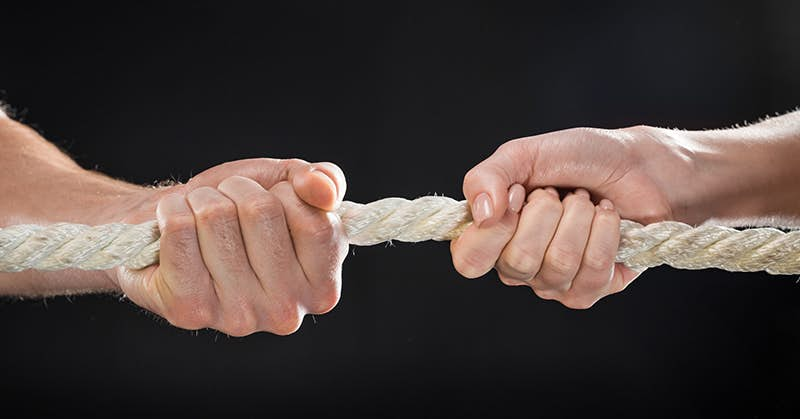
- Use a small rubber ball or tennis ball and squeeze hard for three to five seconds, then relax. Do this up to ten times and then switch hands.
- Start with outstretched fingers and then bend the fingers at the middle joints, so the fingertips touch or come towards the top of the palm. Also bend the thumb. Do this clawing movement ten times with both hands.
- Repeat the above but bend at the knuckles so the fingers and thumb stay unbent and meet each other.
- Put hands flat on a table with fingers and thumb touching and then widen them as much as possible before bringing them back together. Repeat ten times.
- Take a can of soup or similar sized can in each hand. With elbows on the table and hands facing down, slowly bend the wrists up and down for a count of ten. Now repeat with hands facing up.
- With 16 half dollars or similar sized plastic chips on the table, pick up each one with one hand to make a neat pile of eight. Repeat with the other hand. Start again and use both hands together.
- Pick up six to ten coins one at a time and hold them in the right hand. Now push them onto the table with your thumb one at a time. Repeat with the left hand. Repeat using both hands together.
- Turn every coin over onto the other side with each hand separately and then both hand s together.
- Riffle shuffle a pack of cards five times. Deal eight cards onto the table with one hand. Now pick them up one at a time with one hand. Repeat with the other hand. Repeat using both hands together. Spread eight cards on the table and turn each card over with one hand. Repeat with the other hand. Repeat with both hands.
- Using eight Styrofoam packing peanuts or small pieces of cotton wool, pick up each with tweezers and put into a container. Repeat with the other hand.
- Put the peanuts in a line and flick them one at a time with each finger. Repeat with the other hand.
- Bounce a ball on the table and/or floor with hand facing down and then catch it with hand facing up. Do this ten times. Repeat with the other hand.
1 https://www.ncbi.nlm.nih.gov/pmc/articles/PMC6215834/ 2 https://www.researchgate.net/publication/363470410_Correlation_between_Executive_Function_and_Manual_ Dexterity_in_Community-Dwelling_Older_Adults 3 https://pubmed.ncbi.nlm.nih.gov/28189666/ 4 https://www.manchester.ac.uk/discover/news/research-reveals-stronger-people-have-healthier-brains/ 5 https://www.ncbi.nlm.nih.gov/pmc/articles/PMC6109297/ 6 https://pubmed.ncbi.nlm.nih.gov/27420314/ 7 https://www.frontiersin.org/articles/10.3389/fneur.2018.00910/full 8 https://www.sciencedirect.com/science/article/abs/pii/S1074742714000094?via%3Dihub 9 Ibid. 10 https://www.ncbi.nlm.nih.gov/pmc/articles/PMC10121426/ 11 https://www.youtube.com/watch?v=kgqIdCwVivE 12 https://www.youtube.com/watch?v=QPdrr1NXyNo 13 https://www.youtube.com/watch?v=Z3gP3UF9CbQ


